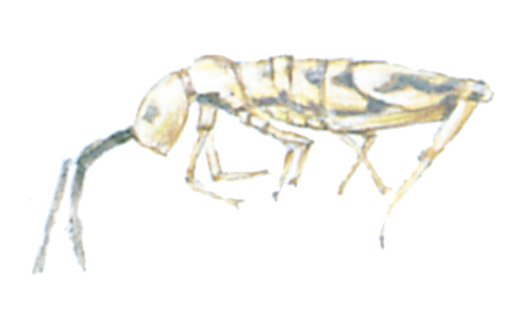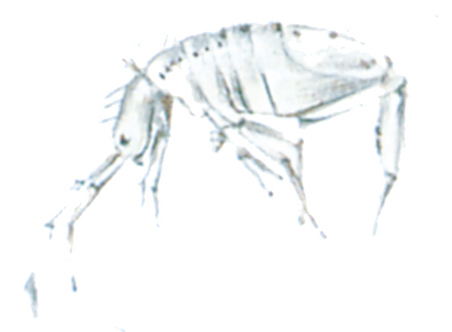(Latin: Order Collembola)

In these tiny insects one of the abdominal segments has a forked appendage which can be jerked backwards, thus propelling the animal into the air.
They are usually greyish, but some species are bright green or black.
Springtails live in places with a high humidity and feed on decaying vegetation and on mosses, algae and moulds. Most of the species live in the surface layers of the soil where they may occur in populations of up to 2 million per square metre. They can also be found in large numbers on dunghills and on the surface of lakes and pools. They often wander into houses for no apparent reason, either from compost, from decaying leaves in the gutters or from mossy roofs.

If they survive indoors in a house this suggests that it is too damp, as for example in some cellars. In rooms that are other- wise dry, springtails sometimes find suit- able living conditions behind cupboards standing against damp external walls.
They cause no damage indoors but naturally they are annoying when present in large numbers. They do not bite humans, but they may produce an itching sensation when they walk about on the skin.




